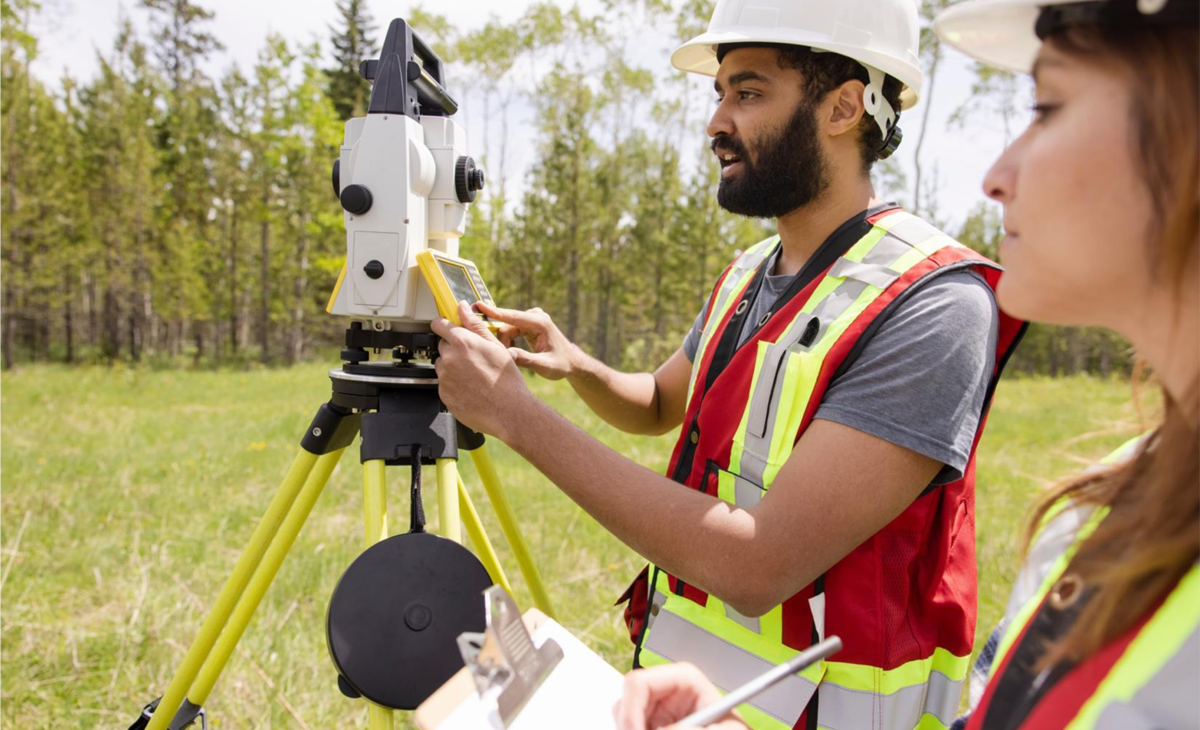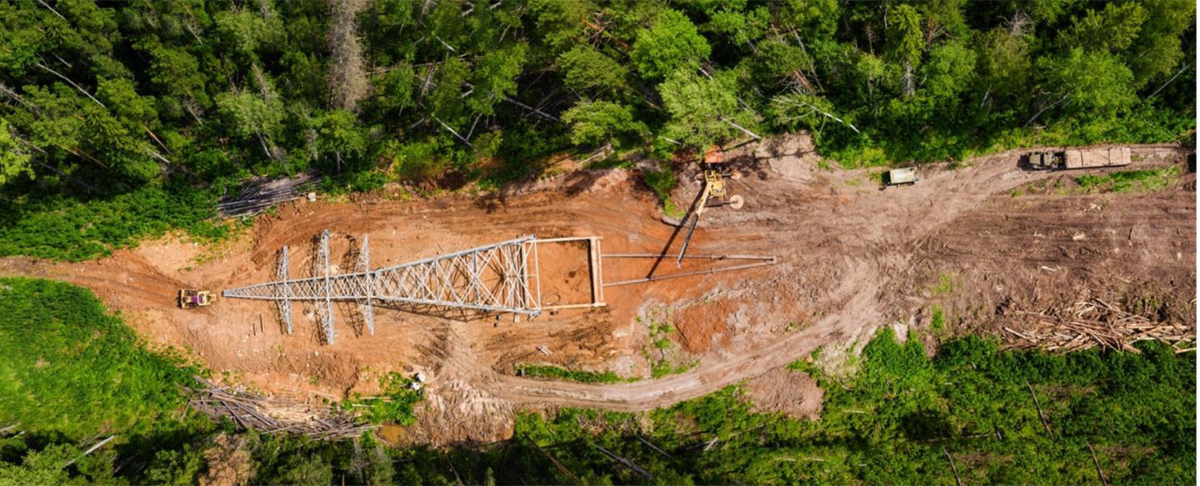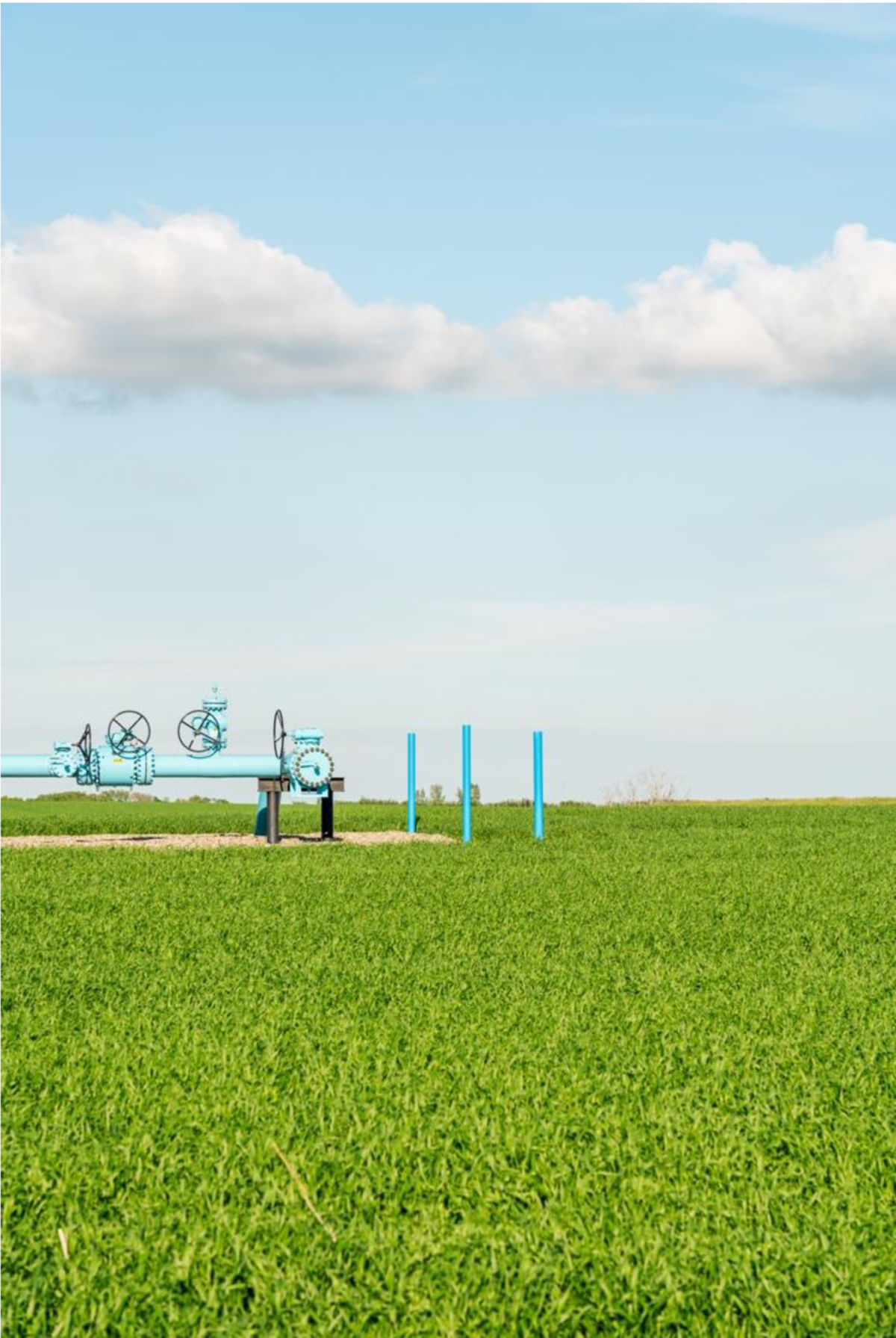LMG News – August 2023
LMG News – August 2023 [PDF 1695 KB]
Welcome to the LMG News, the e-newsletter for all members of the Land Matters Group (LMG)
August 2023

Figure 1 – Coastal New Brunswick scenery

Figure 2 – River location in Quebec
Table of Content

Figure 3 – Pipeline construction site
Update from the Editor’s corner
A Path for Landowners and Municipalities
When the Canada Energy Regulator Act (CER Act) came into force in 2019, it gave the CER the authority to make regulations that address the apportionment of costs directly incurred by parties operating near CER-regulated pipelines. The CER Act also provides the Commission of the CER with the authority to issue an order that conveys a decision on a cost apportionment application.
Based on the CER’s Damage Prevention Regulations, any person who wishes to “construct a facility across, on, along or under a pipeline, or engage in an activity that causes a ground disturbance within the prescribed area”Footnote 1 must obtain authorization from the company before commencing such activities.
This requirement can at times result in a dispute between a landowner and a company regulated by the CER, especially when a landowner is faced with incremental construction costs for authorized projects that run within the prescribed area.
One way that has proven quite effective in resolving cost-apportionment disputes is the CER’s alternative dispute resolution service. When the parties cannot come to a resolution, an application can be made to the Commission for a decision.
The CER is interested in hearing about cost-apportionment disputes from landowners and municipalities, how such disputes have or are being resolved and how further assistance could be provided by the CER. In the coming months, we will be collecting input that will that help us develop efficient and transparent process options to be used by the Commission in its decision-making role.
Véronique Duhamel
Director of Engagement

Figure 4 – Rural landscape in Southern Alberta
The LMG in a Nutshell
The Land Matters Group (LMG) examines and resolves land issues related to energy infrastructure through a collaborative process.
The LMG is a forum for members to exchange information on the protection of the rights and interests of landowners while supporting the goal of achieving regulatory excellence.
The LMG advisory committee is made up of members from across the country who represent the membership. Members of the advisory committee provide advice and make comments and recommendations to resolve land issues.
Members are landowners, landowner associations, advocacy groups, as well as industry sector companies, land professionals and government officials.
Access to Lands – Not one size fits all
This past February, the Land Matters Group Advisory Committee took part in a workshop about access to lands, which is one of the three priority issues listed in the LMG Work Plan. The other two issues are damage to property and early engagement.
The Canada Energy Regulator has clear expectations that pipeline or power line companies under its regulation will engage with landowners and have agreements in place prior to gaining access to private lands. Detailed information about Land Agreements is available on the CER website under the Land Matters Guide.
“Access to lands” is a broad definition that can carry more than one designation, depending on the timing and reasons why the access may be needed by a federally regulated pipeline or power line company. Stipulations regarding access are typically set out in land rights agreements, project orders or regulations such as the obligations of pipeline companies as set out in the damage prevention regulations.
Early Engagement – Project Routing or Siting Phase
Access to lands may be needed by the company to determine a project’s feasibility and to assess the risk factor of potential impacts, the mitigation requirements / methods, and the need to establish measures to ensure regulatory compliance. As part of this phase, the company also determines the initial number and location of temporary workspace that will be needed for the project.
Successful early engagement leads to relationship building between a company’s land agent and a landowner.
Project Construction and Operation Phases
Prior to construction, the company finalizes the location of the right-of-way: the rights to the strip or area of land required by the company to construct and operate a pipeline or power line. The company will also confirm the location and amount of temporary space needed to support project construction. During the operation phase of the facility, the company may need additional lands outside of the right-of-way to support facility maintenance activities.
The terms granting access to lands during the project construction and operations phases must be negotiated by all parties to ensure a clear understanding of everyone’s expectations and obligations. If the company does not already have existing land rights needed for its construction and operations activities, it will negotiate with the landowner for those rights in advance of the use of these lands.
Right of Entry
A right-of-entry order can be granted by the Commission if a company has demonstrated that it was unable to reach a land acquisition agreement to gain access to the required lands. More details on the right-of-entry process can be found on the CER’s website. The Commission takes its responsibility very seriously and only carries out such actions after considerable deliberations.
Right-of-entry disputes can be resolved by the parties negotiating amongst themselves or engaging in a CER-led alternative dispute resolution (ADR) process. ADR is a confidential process where parties can work together to resolve the access dispute, as well as related issues, such as pre-existing concerns.
Access to private lands for Compliance Verification Activities (Inspections)
CER inspection officers may require access to lands on and alongside the right-of-way of CER-regulated facilities, as well as elsewhere on a landowner’s property to conduct its field inspections and verify compliance responsibilities and activities.
Inspection officers have the broad authority through the CER Act to enter lands for the purposes of ensuring safety and security, including the protection of property and the environment. The CER Act permits inspection officers to be accompanied by any other person that they believe is necessary to help them perform their duties and functions.
Emergency Response and Incident Investigation
Access to the whole of the lands is typically for the purposes of responding to and addressing an emergency, such as a spill or release. Full and complete access may also be needed to conduct post-incident investigation activities. Landowners will be notified and kept informed through onsite representatives responsible for leading the response and investigation for such an emergency.
The provisions surrounding situations of this nature are typically described in the land acquisition agreement. Contact the company for more details on the specific access rights contained within easement agreements or other forms of access agreements.
For more information about the discussion that took place during the “Access to Lands” workshop, go to the meeting summary.

Figure 5 – Surveyors using equipment to measure a field
Role of a Land Agent – It’s all About Building Relationships
When specific industrial activities, such as oil and gas projects, well sites, coal mines, roadways, cell towers, wind and solar installations, road easements, and other surface uses, need to be carried out across private land, it is common practice for companies to retain the services of land agents. This article focuses on land agents working on federally regulated pipeline and power line projects.

Figure 6 – Crew meeting on site of ongoing project
LMG Spotlight provides readers with more insight about the people who speak on their behalf as members of the Land Matters Group Advisory Committee (LMG AC).
Before a federally regulated pipeline or power line is constructed, companies primarily retain land agents as their representatives to negotiate access to rights-of-way (RoW) for pipeline and power line projects. In this role, a land agent’s activities may include route selection, as well as engaging with landowners, municipalities, and other potentially impacted entities.
Planning – It is extremely important that relationships are created and maintained to ensure effective communication and understanding. The role of a land agent during this phase is to listen to project stakeholders, particularly landowners, to gain a better understanding of their concerns and expectations regarding the use of their lands, whether it be farming, ranching, industrial, commercial, community, or recreational. The land agent brings this information back to the project team to inform the process of route selection, construction methodology, including timing, and compensation. Open communication and information-sharing by both parties throughout the engagement process is very important for the establishment of a positive relationship.

Figure 7 – Construction of a power transmission line in the forest
Agreements – A land agent meets with potentially impacted landowners along the proposed route to discuss the terms and conditions in any agreement. This could include a land acquisition agreement, frequently referred to as an easement or RoW agreement, and a temporary workspace agreement, where applicable. The land agent reviews the potential impacts of construction and shares the landowner’s preferences for mitigating these impacts. These discussions are brought back to the project team to determine the most appropriate method of mitigation. After further discussions with the landowner, the agreed-upon mitigation measures are documented as construction commitments and are included in the relevant agreements. Signed agreements must be in place before any construction activity can take place for purposes of both safety and liability. See the CER’s website for more information on land agreements.
Project construction phase

Figure 8 – Oil valves in the middle of a field
During these phases, a land agent must ensure that all commitments in the relevant agreements are fulfilled. This is done by working closely with the contractor and company inspectors. Some of these tasks include siting access points for farm machinery; coordinating with fencing crews for livestock management; confirming locations for rock piles; verifying that dust control measures are in place; communicating weed management plans; assisting in documentation for biosecurity compliance; and liaising on reseeding of pasture and hay lands. A land agent also works closely with municipalities on the locations of yard sites and the ongoing upkeep of roads utilized by contractors.
During reclamation, a land agent covers each parcel of land with the landowner to review the construction cleanup and determine any shortcomings. The land agents ensures that these deficiencies shared with the company/contractors to be addressed once the RoW has been returned to a condition equivalent to pre-construction.
In summary, the role of a land agent is about protecting the interests of all parties, not only those of the pipeline or power line company, but also the interests of all landowners, municipalities, and other entities who stand to be impacted by the project.
This article was drafted with the assistance of Josh Vass, a land agent who is also a member of the Land Matters Advisory Committee.
Final Investigation Report on the 2021 Minell Pipeline Incident
The Transportation Safety Board of Canada (TSB) has released its final investigation report on the 2021 Minell Pipeline incident. A farmer ruptured a natural gas pipeline in McAuley, Manitoba, while using a tractor to maintain a water drainage channel in his field. The pipeline did not have adequate soil coverage, creating a serious safety hazard. Thankfully, no one was injured, but ensuring an incident like this doesn’t happen again is a priority.
The CER has taken further action to help prevent incidents like this from happening in the future, including:
- increasing the number of compliance verification activities, we perform related to making sure there is enough soil covering pipelines;
- increasing education around preventing damage to pipelines for landowners and regulated companies;
- engaging with industry, landowners, and contractors to remind them of their responsibilities when working around pipelines; and
- reviewing our current regulations, like the Onshore Pipeline Regulations (OPR), to see where we can improve in this area.
The CER also issued a Safety Advisory on the depth of cover in agricultural areas in April 2022 to remind regulated companies of the importance of having sufficient soil coverage over pipelines.
The companies we regulate are required to notify landowners and land users where agricultural activities may damage the pipe due to inadequate depth of cover under the Damage Prevention Regulations – Obligations of Pipeline Companies. The OPR also requires companies to identify and analyze all hazards and potential hazards, including those relating to the depth of cover.
We will continue to work with regulated companies, landowners, and equipment operators, so they know the rules they need to follow to work and live near pipelines safely.
Learn more about the steps you can take to keep yourself safe around pipelines.

Figure 9 – On site project planning
- Date modified:
